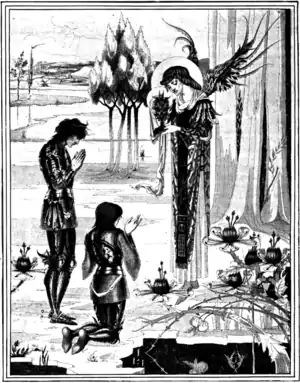
Beardsley's first drawing for reproduction
The frontispiece to "Le Morte d'Arthur."
AUBREY BEARDSLEY.
BY MAX BEERBOHM.
ILLUSTRATED FROM DRAWINGS THAT ARE LITTLE KNOWN, AND SOME THAT HAVE NEVER BEFORE BEEN REPRODUCED.[1]

TO all who knew him, and to all who did not know him but are lovers of lineal art, Aubrey Beardsley's death has been the occasion for much sorrow, an irreparable loss. But there is, I think, some consolation in the thought that he did not die suddenly. Though he died, a great artist, in his first youth, and at the very opening of life, as life is usually reckoned, Fate did not deal with him unfairly, did not take him, as she has taken others, with a kind of brutal treachery, before the fulfilment of all the work that was in him. From his early boyhood, Aubrey Beardsley had known quite well that his life would inevitably be a short one, and it was to this knowledge, partly, that we owe the great range of his achievement in art. Fate had given him a prematurity of power that was in accurate ratio to the appointed brevity of his life, and, in the exercise and the development of his genius, Aubrey Beardsley never rested. He worked on always, with a kind of desperate courage, and with a degree of force and enthusiasm that is given only to the doomed man. He knew that he had no time to lose. At the age when normal genius is still groping for its method, he was the unerring master of his method. He died, having achieved masterpieces, at an age when normal genius has as yet done little of which it will not be heartily ashamed hereafter. Normal genius is in no hurry. If it be struck down suddenly before its prime, it leaves no great legacy to us: we can only rail against Fate.
But Aubrey Beardsley was bound to die young. All his friends knew that as well as he did. The only wonder was that the fine thread of his life was not severed sooner. I remember that when I first saw him I thought I had never seen so utterly frail a creature—he looked more like a ghost than a living man. He was then, I believe, already in an advanced stage of pulmonary consumption. When I came to know him better, I realised that it was only by sheer force of nerves that he contrived to sustain himself. He was always, whenever one saw him, in the highest spirits, full of fun and of fresh theories about life and art.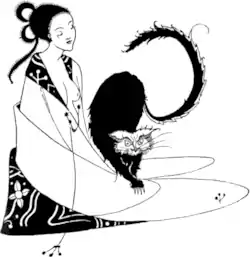
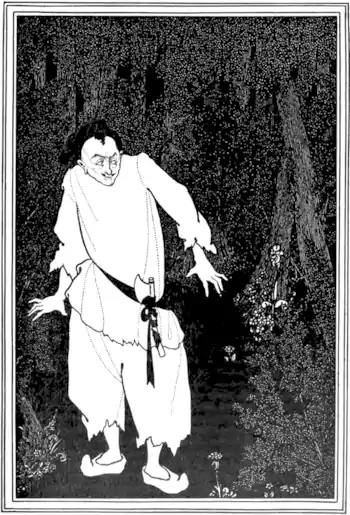
(By kind permission of Leonard Smithers, Esq.)
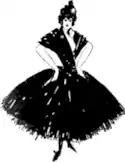
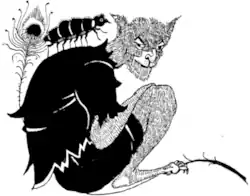
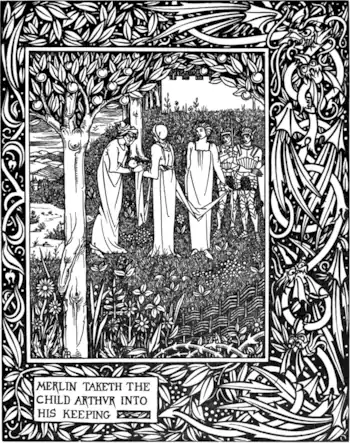
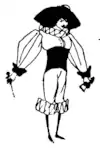
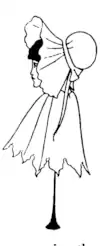
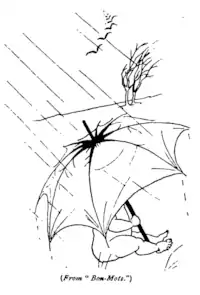
"By ways remote and distant waters sped,
Brother, to thy sad grave-side am I come.
That I may give the last gifts to the dead,
And vainly parley with thine ashes dumb:
Since she who now bestows and now denies
Hath ta'en thee, hapless brother, from mine eyes.
"But lo! these gifts, the heirlooms of past years,
Are made sad things to grace thy coffin-shell.
Take them, all drenchèd with a brother's tears,
And, brother, for all time, hail and farewell!"
These lines, which seem to me no less beautiful than the drawing itself, were written shortly before Beardsley left England for the last time. On the eve of his departure, he was received by Father Sebastian into the Catholic Church, to which he had long inclined. His conversion was no mere passing whim, as some people supposed it to be; it was made from true emotional and intellectual impulse. From that time to his death he was a pious and devout Catholic, whose religion consoled him for all the bodily sufferings he underwent. Almost to the very last he was full of fresh schemes for work. When, at length, he knew that his life could but outlast a few more days, he awaited death with perfect resignation. He died last month, at Mentone, in the presence of his mother and his sister.
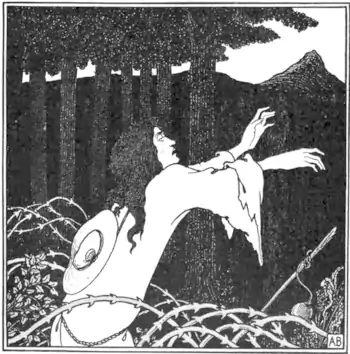
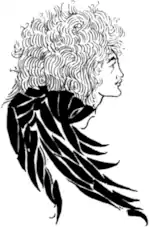
- ↑ A very fully illustrated interview with Mr. Beardsley appeared in The Idler for March, 1897, to which the reader may be referred for additional information, together with many more of the artist's best illustrations—[Ed. Idler].
This work is in the public domain in the United States because it was published before January 1, 1927.
The author died in 1956, so this work is also in the public domain in countries and areas where the copyright term is the author's life plus 60 years or less. This work may also be in the public domain in countries and areas with longer native copyright terms that apply the rule of the shorter term to foreign works.